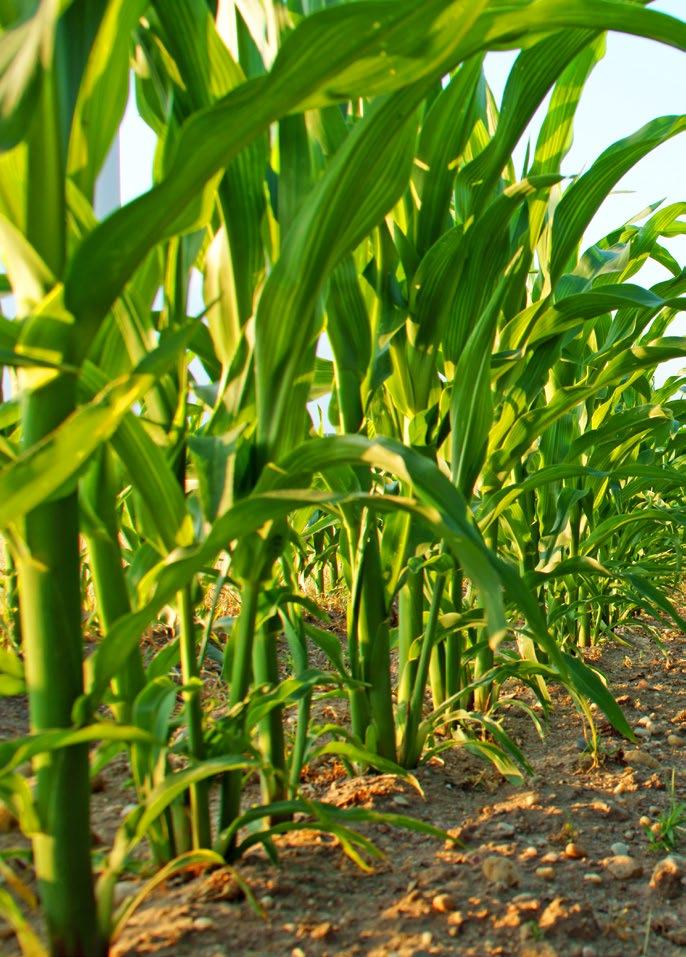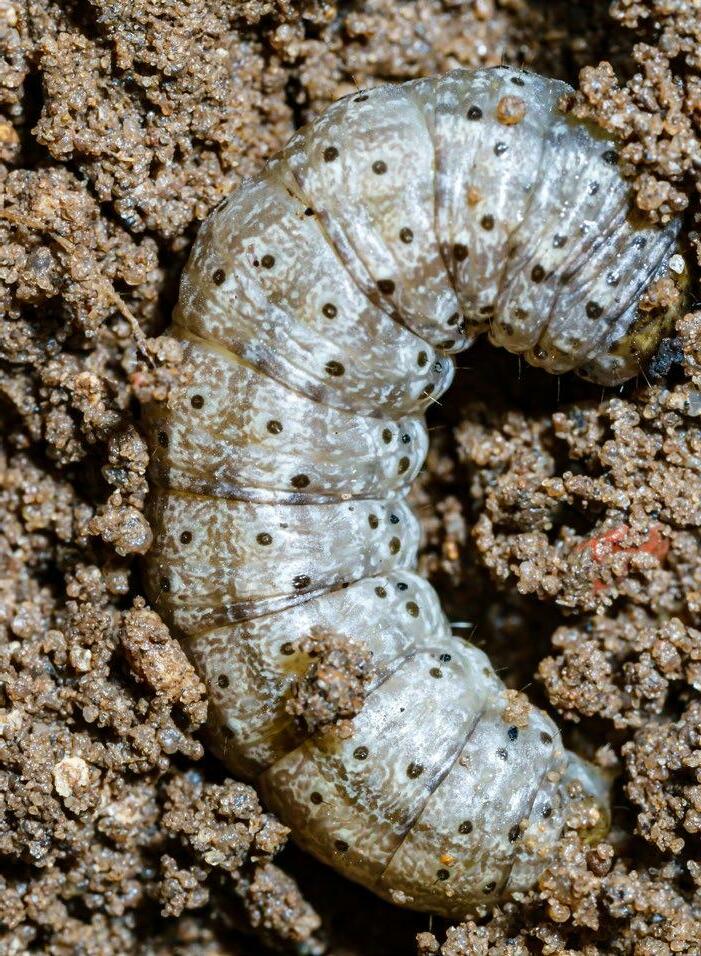




Greetings to this latest edition of the CropLife SA Crop Circular.
As I write this welcome, I find it hard to believe that the end of 2022 is upon us. There seems to be consensus with all whom I talk to, that the end of 2022 will be most welcome; it has indeed been a challenging year for us all.
However, even though 2022 was a tough year, I am extremely proud of the performance of the CropLife SA team. In the face of numerous challenges - from load shedding to dry spells, to flooding and regulatory hurdles - the team has, in my opinion, provided outstanding service to the CropLife SA members.
Rod Bell Chief Executive Officer CropLife South Africa
I will not be going through all the 2022 efforts in detail, but a highlight must include the signing of the ‘Gap Analysis’ (conducted in conjunction with other associations whose members are impacted by Act No. 36 of 1947) with the Director General of the Department of Agriculture, Land Reform and Rural Development that paves the way for working closer with government to find solutions to regulatory challenges.
Other achievements include the CropLife SA 2022 Conference and of course, the CropLife SA seminar exploring the EU Green Deal and its probable impacts on South African farmers.
Having reflected briefly on 2022, I believe it is time to now look forward to 2023. The CropLife SA team will return to full staffing levels when our new Regulatory Manager joins us in February and will grow when our new Stewardship Co-ordinator joins the team in January 2023.
We will provide details of our new colleagues early in 2023. The CropLife SA team looks forward to providing even more services to members in 2023 and having a fully staffed team is essential to obtaining this.
It now remains for me to wish you and your families a safe festive period and a happy and healthy 2023.
Rod









It’s difficult to explain to most people, so I generally don’t attempt to. While our friends and family are planning holidays and festivities, people involved in summer food production are planning to execute on the endless list of planting related tasks. These need to be completed by the end of December, and with the weather as stable as English rugby’s tight five, an adaption to the date is often made. Farmers never miss a deadline, so by the 42nd of December, planting is complete and the next checklist begins.
Two topics that need to be on the checklist this year will be cutworm and Sclerotinia management.

Cutworm has been a significant issue in the industry this year. A spring characterised by warmer and wetter than usual conditions has given cutworm larvae perfect conditions to target maize.
• Cutworms are more active in the warmer spring or summer months. The population or pest pressure can greatly vary from year to year, depending on the weather.
• Delayed planting, for instance, due to extremely wet conditions, can result in the crop and cutworm larvae emerging at the same time, providing perfect feeding conditions for the pest.
• In very wet conditions, like we have recently seen over most of the summer rainfall areas of South Africa, cutworms tend to stay and feed below the soil surface. This makes the use of foliar applied insecticides less effective for control.
• Cutworms can survive on various host crops and weed species, but importantly, also on plant debris from the previous season. It is therefore likely that minimum-, or no-till farming, and the use of cover crops will provide added refuge for cutworms, resulting in higher pest pressure the following season.
• Scouting: Regularly check areas that you suspect are infested during the late afternoon and evening when cutworms are most active. Keep an eye out for wilting plants that have cuts near the base. Dig into the soil around damaged seedlings during the day or by searching with a flashlight at night when larvae are most active.
• Cultural practices: Manage vegetation that hosts larvae. Control weeds and consider winter cultivation which will destroy winter weeds and reduce oviposition sites, with less larvae emerging the following season.
• Chemical control: It is much easier and more effective to control cutworms when they are small larvae. Where possible, apply products when cutworms are active late in the afternoon or at night. Cutworm baits can be applied preventatively to the fields where cutworms are present before planting. Corrective insecticide applications can be made when damage occurs after crop emergence. Always apply to moist soil to ensure that the insecticides can move into the first 50 mm of soil, where cutworms are active. Ensure to use registered products at the correct recommended dosage rates and follow cutworm specific label recommendations carefully.
This disease presented itself in soyabeans last year. It is something to focus on in a wet season and is a disease that is difficult to control once infection has taken place. This is due to the soyabeans making a thick canopy, one that provides a good microclimate for the disease, and is difficult to penetrate with a sprayer. Importantly: the disease infects the plant during the early flowering stage (R1-R3). Once you see crops turning yellow, you are too late.
• The presence of the pathogen and host, therefore, previous crops that are potentially hosts are important to acknowledge. Sclerotia overwinter in the soil and can do for many years. Potatoes, sunflowers and dry beans are all attractive hosts, and these rotations should be avoided or treated with constant scouting and management.
• Wetter, more humid seasons are conducive to disease development.
• High planting populations, combined with humid conditions, and cool temperatures will provide an optimal environment for disease development.
• Good rotational practice that avoids host plants.
• Varieties: While there is no silver bullet, there will be some cultivars that may be more resistant to sclerotinia than others. This can be due to the microclimate created by their canopy traits, or the way in which, or where they present their flowers (the main infection site).
• Chemical control: Sclerotinia is a difficult pathogen to investigate due to its disease cycle. There are several unproven remedies touted by some people, many of which is best left in the pub that you heard about them in. The use of registered products, applied at the correct stage (early flowering) should be the starting point for a strong preventative programme.
• Biological control: Pathogens that target sclerotia in the soil, such as Conythirium Minitans (strains registered for sclerotinia) can be a powerful tool when applied correctly to the soil. Make sure you apply them as the label recommends.
The summer cropping industry is very different to most industries when it comes to December “holidays”. So, the best thing to do is wish you all the very best, during a late and busy season.
Good luck, merry Christmas, and happy holidays.

 Chantel Arendse (Lead: Plant Biotechnology)
Chantel Arendse (Lead: Plant Biotechnology)
Since its first introduction more than 25 years ago, biotech crops have been given a bad rap by those opposing the technology. The main concerns from these opposing groups relate to issues regarding human health, food safety and environmental risks. The reality, however, is that these claims questioning the safety of biotech crops, have repeatedly been refuted by numerous peer reviewed scientific studies and strict regulatory oversight by governments for more than two decades, without any incident or rejections due to safety.
Despite available science, technology skeptics persist, influencing the discourse of biotech acceptance, especially in Africa where many farmers on the continent still do not have access to these seed technology options. South African farmers, however, have been fortunate enough to have early access to biotech seed, giving them a clear advantage to mitigate pest outbreaks such as Fall armyworm and allowing them to achieve good harvests for the last several years.
Failure to embrace biotech seed innovations have meant missed opportunities for most farmers on the African continent, to not only improve their food security standing with better yields, but also to deploy more sustainable farming practices for the benefit of the environment. To help put things in perspective, here’s a summary extract from recently published reviews of GM crop cultivation from 1996-2020, reporting on how biotech crops have made a positive impact on agriculture’s environmental footprint.
Contributing to global food security and reduced pressure to use new land in agriculture
• GM crop technology has increased yields through improved control of pests and weeds. For example, insect resistant (IR) crop technology used in cotton and maize has, between 1996 to 2020 across all users of this technology, increased yields by an average of 17.7 percent for IR maize and 14.5 percent for IR cotton relative to conventional production systems. Farmers who grow IR soybeans commercially in South America have seen an average 9.3 percent increase in yields since 2013.
• Over 25 years of widespread use, crop biotechnology has been responsible for the additional global production of 330 million tonnes of soybeans, 595 million tonnes of maize, 37 million tonnes of cotton lint, 15.8 million tonnes of canola and 1.9 million tonnes of sugar beet.
• GM crops allow farmers to grow more without needing to use additional land. For example, if crop biotechnology had not been available to farmers in 2020, maintaining global production levels that year would have required the planting of an additional 11.6 million hectares (ha) of soybeans, 8.5 million ha of maize, 2.8 million ha of cotton and 0.5 million ha of canola. This 23.4 million ha total is equivalent to the combined agricultural area of Philippines and Vietnam.
• Crop biotechnology has significantly reduced agriculture’s greenhouse gas emissions by helping farmers adopt more sustainable practices such as reduced tillage, which decreases the burning of fossil fuels and retains more carbon in the soil. Had GM crops not been grown in 2020, for example, an additional 23.6 billion kilograms of carbon dioxide would have been emitted into the atmosphere, which is the equivalent of adding 15.6 million cars to the roads.
• From 1996 to 2020, crop biotechnology reduced the application of crop protection products by 748.6 million kilograms, a global reduction of 7.2 percent on the area planted to GM crops. This is equal to 1.5 times China’s total annual crop protection product use. As a result, farmers who grow GM crops have reduced the environmental impact associated with their crop protection practices by 17.3 percent.
For more information and details refer to PG EconomicsFeeding the world sustainably.
The incidence of moth damage to potatoes has increased in the main production areas. This damage can be attributed to two moth species, the potato tuber moth (Phthorimaea operculella) that causes both foliar and tuber damage, as well as the tomato leaf miner (Phthorimaea absoluta, previously Tuta absoluta) which attacks the foliage. Both pest species attack crops in the Solanaceae plant family (including tomatoes, potatoes, and tobacco) and can also be observed on weeds in the same plant family, such as night sage. During field visits to the Limpopo production areas, both species were present in abundance.
Click here to read more.
The new CropLife SA website is finally live and provides users with an easier way to navigate through the vast number of resources available on the site, by means of a knowledge base search function.

By keeping track of the type of queries usually received by the CropLife SA team, the site was also redesigned to make some of the information easier to find.


The possible impacts of the EUGD on South African agriculture have not been deliberated amongst the various stakeholders in its entirety, and the need for sufficient data in order to understand the practical implications for South Africa became apparent.
The European Union Green Deal (EUGD) and its accompanying farm to fork (F2F) strategy have been dominating several discussions in the agricultural community since its presentation just over two years ago, mostly because its objectives, although commendable, are considered by many to be unattainable in practical terms. In addition, the knock-on effect of some of the proposed policies could have a severely negative impact on agriculture and trade in developing countries, who are most at risk when it comes to food security.
For this reason, CropLife South Africa initiated a discussion between the crop protection industry, grower groups, academia and government, to try and understand what the impacts could be, and how South Africa should prepare for it. The discussion took place in the form of a conference held in Cape Town on 24 November 2022 as a hybrid event with in-person and virtual speakers and attendees.
Click here for a summary of the discussions, including links to the conference sessions.

 AgriAbout – Chantel Arendse
AgriAbout – Chantel Arendse
On a daily basis we are confronted with headlines signalling the urgency to address issues concerning the climate crisis, food shortages, our deteriorating environment, and declining natural resources. Within this context, agriculture will play a pivotal role due to the growing threat that these adverse environmental and climatic conditions have on our ability to safeguard our food supply to meet the demands of a burgeoning global population. Farmers worldwide, both commercial and smallholder, will more frequently have to overcome

CropLife SA sponsored an episode on the television series, Meer as Grond, which aired on Via. The episode featured Danie Bester who farms in Balfour, Mpumalanga, and focused on stewardship and doing things right. Interviews were also conducted with CropLife SA representatives Dr. Gerhard Verdoorn and Chantel Arendse about food safety and responsible use. The episode will only be available to us for distribution in a month or so due to licensing, but it can be viewed now on DSTV Catch-Up.
the challenges posed by extreme weather events, pests and disease outbreaks, the rising cost of inputs and declining resources. To sustain production efficiencies and yield gains, farmers will need all the help they can get. This includes having access to all possible solutions on offer in the farmer’s toolbox, including innovations such as biotech seed to help them produce our food in an efficient, affordable, and sustainable way.
Read the full article here.
Landbou.com - Charné Kemp
Hoewel voorspellings van ‘n nat somerseisoen boere meestal optimisties stem, is die gepaardgaande vooruitsig van uitbrekings van verwoestende sprinkaanplae onwelkome nuus.
Agri SA het vroeër sy kommer in ‘n verklaring hieroor uitgespreek. Hy het ‘n vergadering vandeesweek met die minister van departement van landbou, grondhervorming en landelike ontwikkeling belê oor die gereedheid om die plaag te bestry. Lees die volledige berig hier.

Some of South Africa’s top contributors to agriculture were recognised at the 2022 Agricultural Writers SA Awards on Friday, 11 November 2022. The annual event salutes those that work hard to promote sustainable farming enterprises, elevate food security, support rural economies, and nurture the image of agriculture in South Africa.
During the event, members of the Agricultural Writers SA were honoured for their role in communicating issues of interest to the agricultural sector. Awarding the Bayer Technical article award, Liza Bohlmann emphasised the unique skill required to write a good technical agricultural article. “It is about presenting technical information in a way that everyone can understand, without losing the scientific essence,” she explained.
Lepidopteran pests such as Sesamia cause major damage in maize fields, resulting in significant yield losses. To manage these pests early with the right set of tools, it is vital that farmers can identify them.
Sesamia, better known as the pink stem borer, occurs mainly along the coastal regions, the Lowveld of Limpopo and Mpumalanga, North West and parts of the maize triangle. Completion of the pink stem borer’s lifecycle varies between six to ten weeks.
Similar to the Chilo borer, pink stem borers start moth flights as early as September and have five overlapping generations per year. Moths are active during night-time and live between two to 14 days. Moths need early maize plantings for egg laying and survival, even though grass is sometimes preferred.
Female moths lay large groups of more than 100 eggs, mainly between leaf sheaths or close to maize cobs. A single female can produce up to 1 000 eggs. Eggs are creamy white in colour but darken before hatching in six to nine days, depending on the host plant and temperatures. Read more.
Elriza Theron of CropLife South Africa explained the importance of responsible reporting, especially when it comes to articles about the crop protection and plant biotechnology industries. “These products must be developed, sold, and used responsibly. It is as important that it is written about responsibly. This is what the CropLife South Africa Crop Protection Article and Biotechnology Article awards want to promote and reward. Read the full article here
Die Europese Unie se beweging na ‘n groener omgewing het gelei tot die sogenaamde Green Deal-ooreenkoms en baie streng vereistes word aan invoerlande gestel. CropLife SA het die leiding geneem en tydens ‘n konferensie verskeie rolspelers hieroor ingelig en die impak hiervan bespreek. RSG Landbou gee terugvoer hieroor. Luister hier
In 2020, the European Union (EU) adopted a set of policies aimed at making the EU ‘climate neutral’ by 2050, all under the so-called ‘EU Green Deal’. There are several initiatives that are covered by the umbrella EU Green Deal, but the ‘Farm to Fork’ strategy is one that is of greatest concern to the South African agricultural economy. Read more
Our team wishes you and your loved ones a peaceful festive season and a prosperous new year.






Thank you for your support during 2022 and we look forward to an even better 2023.
Please note that the CropLife SA office will close on 23 December 2022 and reopen on 3 January 2023.
If you have any queries, would like to become a member, or if you have general feedback, we would love to hear from you. Please contact any member of our team:
CropLife SA Office 087 940 4168 info@croplife.co.za
Rodney Bell - Chief Executive Officer 066 273 6027 rod@croplife.co.za
Gerhard Verdoorn - Operations & Stewardship Manager 082 446 8946 gerhard@croplife.co.za
Chantel Arendse - Lead: Plant Biotechnology 082 992 0952 chantel@croplife.co.za

Elriza Theron - Marketing & Communications Manager 072 443 3067 elriza@croplife.co.za
Nadia van Niekerk - Financial & Membership Administrator 072 940 5591 nadia@croplife.co.za
Chana-Lee White - Agri-Intel Manager 072 298 9389 chana@croplife.co.za
Luigia Steyn - Agri-Intel MRL Consultant 060 508 6369 luigia@croplife.co.za
Liezel Cronje - Agri-Intel Administrator 072 122 5964 liezel@croplife.co.za